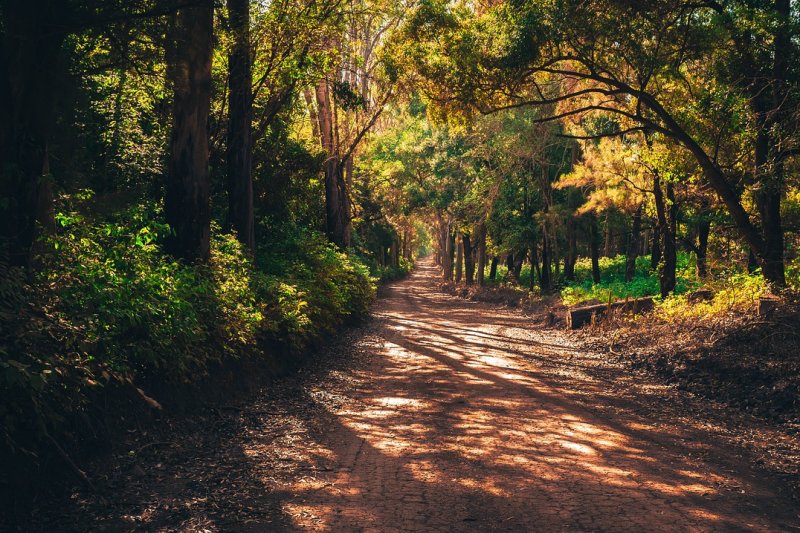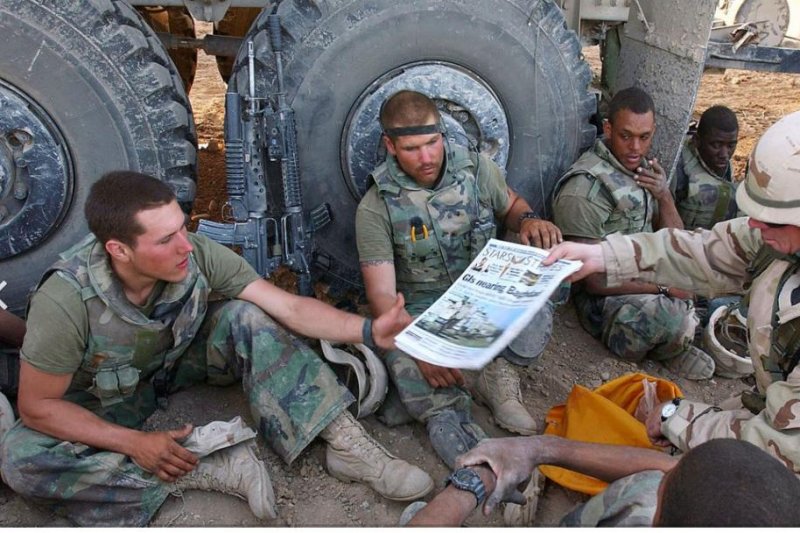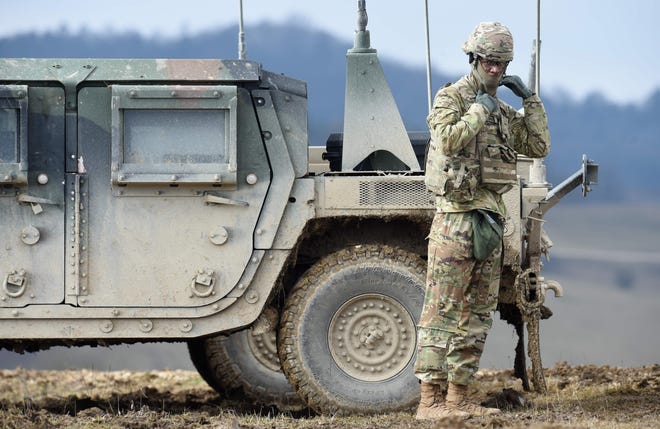Issued on: 11/09/2020 -

A deforested plot of the Amazon near Porto Velho, in Brazil's Rondonia State. © Bruno Kelly, REUTERS
Text by:Benjamin DODMAN
Wildlife populations have fallen by more than two-thirds in less than 50 years, according to a major report by the World Wildlife Fund. FRANCE 24 spoke to the conservation group’s director-general about the staggering loss of Earth's biodiversity, its implications for humanity, and what steps should be taken to reverse this catastrophic decline.
Human activity has severely degraded three quarters of all land and 40 percent of Earth's oceans, and the quickening destruction of nature is likely to have grave consequences on our health and livelihoods, according to the 2020 edition of the Living Planet Index, which was released on Thursday.
A collaboration between WWF International and the Zoological Society of London, the Index said increasing deforestation and agricultural expansion were the key drivers behind a 68 percent decline in global populations of mammals, birds, amphibians, reptiles and fish between 1970 and 2016. It warned that continued natural habitat loss increased the risk of future pandemics as humans come into ever closer contact with wild animals.
2020: The year that forced us to stop in the wake of a global pandemic 🛑 pic.twitter.com/r0eIYdRwT6— WWF (@WWF) September 10, 2020
In an interview with FRANCE 24, Marco Lambertini, the director-general of WWF International, said the coronavirus pandemic has helped raise awareness of the direct link between biodiversity loss and vital threats to humanity. He urged world leaders to agree on a goal to reverse catastrophic nature loss, similar to the targets set for climate at a UN summit in Paris in 2015.
FRANCE 24: We’ve heard – and often ignored – such dire warnings before. Were even you surprised by the scale of nature loss this time?
Marco Lambertini: I was shocked, but not surprised. The decline is so steep it is almost difficult to believe it can happen in such a short period of time, compared to the millions of years these species have been on the planet. The surprise, perhaps, is that despite the many warnings the trend is still negative and in fact is almost accelerating. It is shocking, it is sad, because we are failing in our moral duty to respect these other life forms. But there is a new message too and, perhaps, a glimmer of hope: we are actually beginning to look at these figures and get worried. It’s an important cultural shift, from being sad about extinction and deforestation to actually begin to be worried. We’ve seen it happen with climate, now we are beginning to see it also with biodiversity loss. That gives me hope. You need to get worried before you actually do something about it.
Is the fight to preserve nature shifting from a moral duty to an existential struggle for humans too?
Rather than shifting from one to the other, I would say we are starting to understand it as both. There are still many people who are rightly appalled by what we are doing, by this ecocide driven by humans. As the dominant species, we are bullying nature in a way that is unacceptable. On the other hand, we are beginning to understand that we are the ones who are going to pay the price. The planet will survive one way or another, biodiversity will come back, forests will come back. But whether our societies can survive, that’s a big question mark, one that is very worrying for our children. The horizon we are talking about here is not hundreds of years – it’s decades.
How did it come to this? Have we failed to see that by hurting nature we’re hurting ourselves?
There is, to some extent, an opposition between an anthropocentric view of the world and a biocentric one. In the former, human kind is at the centre of everything and comes first, while in the latter, we understand that we have to control our behaviours and be stewards rather than exploiters. But I would say there is something deeper, almost in our genes. Like other species, we’ve been evolving and fighting in a very difficult environment for the majority of our life history. We have developed the hunter-gatherer approach to survive day by day, that’s what most species do. That mentality is still in us, but we need to understand that it is an unsustainable approach and that we cannot continue this way. We are almost 8 billion, with the technology to hurt nature like never before. We have to change our relationship with the planet, from grabbing, without thinking of the consequences, to managing.
Of course, inequality is driving the ecological footprint at different speeds. Some people consume far beyond the limits of the planet while others still struggle to make a living and find food. But the destruction of nature is hurting poor communities most. Rich economies are able to withstand this impact for longer, whereas the people who depend directly on nature, such as subsistence farmers, will find it much harder to cope.
Has the coronavirus pandemic helped bring this reality home to people, in a more explicit way?
In this tragic situation there is perhaps, awfully, a useful lesson in the connection between nature and human health, and the fact that by destroying forests, by consuming and poaching wildlife we expose ourselves to risks that are simply not worth it. The statistics are striking: 60 percent of emerging diseases with potential to become pandemics come from interaction with wildlife. It is most likely the next pandemic will come again from one of these zoonotic diseases [that jump from animals to humans]. So yes, there is a growing awareness.
How can this growing awareness translate into positive action?
We need to make sure that the trillions of dollars that go into the recovery [from the pandemic crisis] incentivise green shifts in agriculture, in forestry and other sectors that destroy nature today. We also need stronger regulation of wildlife trade and consumption – by which I mean commercial trade, not subsistence hunting by indigenous communities. Crucially, next year we will have the opportunity to set a global goal for nature like we did for climate [at the 2015 UN Climate Change Conference] in Paris. The French government is extremely active in that sense and we need other governments to embrace that ambition at the UN Convention [on Biodiversity] next year. We need a nature-positive goal that commits to halting and reversing nature loss – meaning natural spaces and wildlife populations – by 2030.
How do we reverse nature loss?
We know exactly how to do it! The other good news at this point in time is that science has never been clearer on both the problems and the solutions. Awareness in the political, societal and business spheres is also beginning to grow, so now is the right time to clinch a solid agreement and agree targets in three key areas.
The first is the need to protect more natural places. We currently protect just 15 percent of land areas and 8 percent of the oceans, when we need to protect at least 30 percent. Secondly, we need to curb the illegal trade of wildlife on land and overfishing. Thirdly, and this is the most challenging, we need to ‘green’ the key economic drivers of nature loss. Agriculture must become deforestation-free and reduce the use of pesticides and fertilizers; fisheries must allow fish stocks to recover and not destroy underwater ecosystems; and then there’s mining, forestry and infrastructure.
Frankly, we can do all this in a way that is more sustainable. It’s a matter of applying the right technology, having the right regulations and, fundamentally, the right financial incentives. Twenty years ago we were saying it’s impossible to replace fossil fuels with clean energy. Here we are, clean energy is now cheaper – it can happen in the other sectors too.
Wildlife populations have fallen by more than two-thirds in less than 50 years, according to a major report by the World Wildlife Fund. FRANCE 24 spoke to the conservation group’s director-general about the staggering loss of Earth's biodiversity, its implications for humanity, and what steps should be taken to reverse this catastrophic decline.
Human activity has severely degraded three quarters of all land and 40 percent of Earth's oceans, and the quickening destruction of nature is likely to have grave consequences on our health and livelihoods, according to the 2020 edition of the Living Planet Index, which was released on Thursday.
A collaboration between WWF International and the Zoological Society of London, the Index said increasing deforestation and agricultural expansion were the key drivers behind a 68 percent decline in global populations of mammals, birds, amphibians, reptiles and fish between 1970 and 2016. It warned that continued natural habitat loss increased the risk of future pandemics as humans come into ever closer contact with wild animals.
2020: The year that forced us to stop in the wake of a global pandemic 🛑 pic.twitter.com/r0eIYdRwT6— WWF (@WWF) September 10, 2020
In an interview with FRANCE 24, Marco Lambertini, the director-general of WWF International, said the coronavirus pandemic has helped raise awareness of the direct link between biodiversity loss and vital threats to humanity. He urged world leaders to agree on a goal to reverse catastrophic nature loss, similar to the targets set for climate at a UN summit in Paris in 2015.
FRANCE 24: We’ve heard – and often ignored – such dire warnings before. Were even you surprised by the scale of nature loss this time?
Marco Lambertini: I was shocked, but not surprised. The decline is so steep it is almost difficult to believe it can happen in such a short period of time, compared to the millions of years these species have been on the planet. The surprise, perhaps, is that despite the many warnings the trend is still negative and in fact is almost accelerating. It is shocking, it is sad, because we are failing in our moral duty to respect these other life forms. But there is a new message too and, perhaps, a glimmer of hope: we are actually beginning to look at these figures and get worried. It’s an important cultural shift, from being sad about extinction and deforestation to actually begin to be worried. We’ve seen it happen with climate, now we are beginning to see it also with biodiversity loss. That gives me hope. You need to get worried before you actually do something about it.
Is the fight to preserve nature shifting from a moral duty to an existential struggle for humans too?
Rather than shifting from one to the other, I would say we are starting to understand it as both. There are still many people who are rightly appalled by what we are doing, by this ecocide driven by humans. As the dominant species, we are bullying nature in a way that is unacceptable. On the other hand, we are beginning to understand that we are the ones who are going to pay the price. The planet will survive one way or another, biodiversity will come back, forests will come back. But whether our societies can survive, that’s a big question mark, one that is very worrying for our children. The horizon we are talking about here is not hundreds of years – it’s decades.
How did it come to this? Have we failed to see that by hurting nature we’re hurting ourselves?
There is, to some extent, an opposition between an anthropocentric view of the world and a biocentric one. In the former, human kind is at the centre of everything and comes first, while in the latter, we understand that we have to control our behaviours and be stewards rather than exploiters. But I would say there is something deeper, almost in our genes. Like other species, we’ve been evolving and fighting in a very difficult environment for the majority of our life history. We have developed the hunter-gatherer approach to survive day by day, that’s what most species do. That mentality is still in us, but we need to understand that it is an unsustainable approach and that we cannot continue this way. We are almost 8 billion, with the technology to hurt nature like never before. We have to change our relationship with the planet, from grabbing, without thinking of the consequences, to managing.
Of course, inequality is driving the ecological footprint at different speeds. Some people consume far beyond the limits of the planet while others still struggle to make a living and find food. But the destruction of nature is hurting poor communities most. Rich economies are able to withstand this impact for longer, whereas the people who depend directly on nature, such as subsistence farmers, will find it much harder to cope.
Has the coronavirus pandemic helped bring this reality home to people, in a more explicit way?
In this tragic situation there is perhaps, awfully, a useful lesson in the connection between nature and human health, and the fact that by destroying forests, by consuming and poaching wildlife we expose ourselves to risks that are simply not worth it. The statistics are striking: 60 percent of emerging diseases with potential to become pandemics come from interaction with wildlife. It is most likely the next pandemic will come again from one of these zoonotic diseases [that jump from animals to humans]. So yes, there is a growing awareness.
How can this growing awareness translate into positive action?
We need to make sure that the trillions of dollars that go into the recovery [from the pandemic crisis] incentivise green shifts in agriculture, in forestry and other sectors that destroy nature today. We also need stronger regulation of wildlife trade and consumption – by which I mean commercial trade, not subsistence hunting by indigenous communities. Crucially, next year we will have the opportunity to set a global goal for nature like we did for climate [at the 2015 UN Climate Change Conference] in Paris. The French government is extremely active in that sense and we need other governments to embrace that ambition at the UN Convention [on Biodiversity] next year. We need a nature-positive goal that commits to halting and reversing nature loss – meaning natural spaces and wildlife populations – by 2030.
How do we reverse nature loss?
We know exactly how to do it! The other good news at this point in time is that science has never been clearer on both the problems and the solutions. Awareness in the political, societal and business spheres is also beginning to grow, so now is the right time to clinch a solid agreement and agree targets in three key areas.
The first is the need to protect more natural places. We currently protect just 15 percent of land areas and 8 percent of the oceans, when we need to protect at least 30 percent. Secondly, we need to curb the illegal trade of wildlife on land and overfishing. Thirdly, and this is the most challenging, we need to ‘green’ the key economic drivers of nature loss. Agriculture must become deforestation-free and reduce the use of pesticides and fertilizers; fisheries must allow fish stocks to recover and not destroy underwater ecosystems; and then there’s mining, forestry and infrastructure.
Frankly, we can do all this in a way that is more sustainable. It’s a matter of applying the right technology, having the right regulations and, fundamentally, the right financial incentives. Twenty years ago we were saying it’s impossible to replace fossil fuels with clean energy. Here we are, clean energy is now cheaper – it can happen in the other sectors too.
 Kai, Alma and Shaked, aged 13 to 14, fought for the right to wear shorts to school in Ra'anana, central Israel. © FRANCE 24
Kai, Alma and Shaked, aged 13 to 14, fought for the right to wear shorts to school in Ra'anana, central Israel. © FRANCE 24










